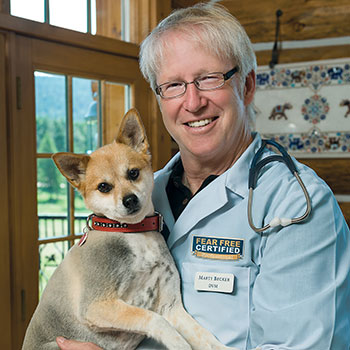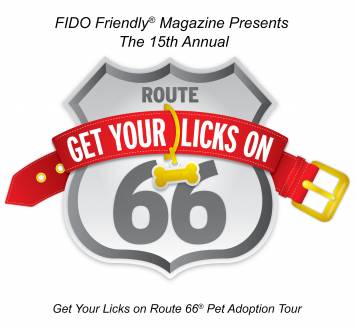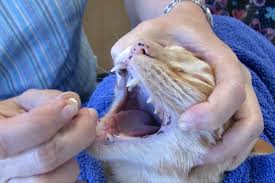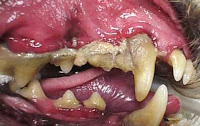5 Signs You Need To Get To The Vet ASAP!
Dr. Marty Becker, America's Veterinarian
 Animal Radio Veterinary Correspondent Dr. Marty Becker counts down the top 5 things to look out for that indicate a health emergency for your pet.
Animal Radio Veterinary Correspondent Dr. Marty Becker counts down the top 5 things to look out for that indicate a health emergency for your pet.
Dr. Becker advises us that there are so many things people freak out about, like if their dog eats chocolate. But if they eat a regular candy bar of milk chocolate, it is not much of a concern, as it is the semi-sweet and baking chocolate which is the worst.
He tells us the five things you really need to be concerned about are:
1. Bleeding
Bleeding is a concern, especially if they are bleeding from an orifice like their nose, mouth, ears or rectum. That is not something you want to wait and see over the weekend. You need to get to a veterinarian immediately. This could means a dog has eaten poison or may even a fracture or a rupture.
2. Ongoing Vomiting or Diarrhea
You need to ask yourself if it is persistent vomiting and diarrhea or just one time? Is your pet straining to go to the bathroom? Is your pet weak or depressed? If the answers to these questions are no, the problem will probably pass. But let's take an animal that has vomited over and over again. It then starts dry heaving, with nothing coming up. It may also have diarrhea. This is when you need to get to your vet's office.
3. Extremely Depressed or Collapses
If your pet seems really depressed and/or collapses, you need to get them to the vet immediately. These can be caused by heat stroke or an insect bite, maybe even a seizure.
 4. Allergic Reaction
4. Allergic Reaction
If you see an allergic reaction to medication or vaccinations or a bee sting, where you start to see swelling in the face or body, you should head to the vet.
5. Loss of Consciousness
An animal might have been hit by something and has a head injury; you need to get to the vet immediately.
Our own Dr. Debbie wants to add a few more things to the list:
6. Pale or White Gums
Dr. Debbie doesn't care what other symptoms your pet may or may not have, if they have white gums, this is not normal and you should get them to a vet.
7. Bloat (Mainly Occurs in Deep Chested Dogs)
If your dog attempts to vomit over and over again, they are not acting normal and seem anxious and restless, they may be hunched over, their stomach might make gurgling sounds and be tight like a drum, you should immediately get them to a vet, as this is a life or death situation.
8. Sudden Weakness
If you pet has sudden weakness in their back legs, you should get them to a vet.
The above are all signs hat you need to get to the vet immediately. Use your best judgment, as you know your pet.
Visit Fear Free Happy Homes for tips on making your home fear free and to locate a Fear Free Veterinarian near you. Go to Fear Free Pets to become certified.
Listen and Explore the Fear Free Expert Series
Lost A Pet?
Donna Lewis, LostMyDoggie.com
 Donna Lewis is a Senior Staff Member and Lost Pet Recovery Specialist at LostMyDoggie.com and LostMyKitty.com. This nationwide service automatically dials all the phones within the radius of the lost pet alerting neighbors. Does this work? The service claims an 85-percent success rate.
Donna Lewis is a Senior Staff Member and Lost Pet Recovery Specialist at LostMyDoggie.com and LostMyKitty.com. This nationwide service automatically dials all the phones within the radius of the lost pet alerting neighbors. Does this work? The service claims an 85-percent success rate.
They provide many free services as well as paid services that are instrumental in finding lost dogs and cats. Countless shelters and rescue groups use them when a reliable lost pet service is needed. They have been solely responsible for finding 1000's of lost dogs and cats all over the country. LostMyDoggie.com was started in 2008 and LostMyKitty.com was started three years later in 2011.
Their services include issuing amber alerts for lost pets. They do this by mapping out an area where an animal was last seen. Then they gather all of the listed numbers (both landlines and cellphones) of people who live in that area, with their proprietary system where they are able to get all of the listed numbers. This includes people who have listed their cellphones with public utility companies or any other place where they have listed these numbers as their primary contact.
A recorded broadcast is then sent out to all of the numbers, with a description of the pet and the owner's contact number. They also include their website where a picture can be seen of the lost animal.
 They offer both a free service and a paid service. Their free package includes a free fax and email alert, as well as found pet flyers sent out to local vets, shelters, rescue groups and groomers and animal related businesses. They will also send out email alerts to your neighbors.
They offer both a free service and a paid service. Their free package includes a free fax and email alert, as well as found pet flyers sent out to local vets, shelters, rescue groups and groomers and animal related businesses. They will also send out email alerts to your neighbors.
Their paid services include packages that start with 250 calls up to 5,000 calls. We all get those "robo calls" and usually hang up on them right away. However, they immediately start of with stating that this is a "Lost Pet Alert." Their caller ID also shows up as LostMyDoggie so people have some idea of what the call is about. With so many people being pet owners, some are concerned that someone might actually be calling about their own pet that might have gotten out. This means they have a high success rate on their calls and don't receive a lot of hang-ups.
Donna tells us that if your pet does get lost, you should immediately start posting flyers everywhere you can. Don't think that if your dog has a microchip and ends up in a shelter that they will contact you. That should happen, but unfortunately it doesn't always happen. This is because it is not required in all states that animals be scanned for a chip when they are taken to a shelter.
Visit Website
Visit Website
15th Annual Get Your Licks On Route 66
 It's that time of year again where FIDO Friendly travels down the Mother Road, stopping at shelters along the way to support adoption events from August through September. Helping to save lives, one shelter at a time! In the first 14 years, they helped to place over 18,000 pets into new forever homes! In 2022, alone, they helped to place over 1,200 pets into new forever homes. As always, they are hoping to break that record this year. Join them this year as they continue to travel down America’s Favorite Highway, helping to save lives, one shelter at a time. They even bring their giant spinning wheel filled with prizes provided by their sponsors where a donation gives attendees a chance to win fabulous prizes and all proceeds go to the shelter at the end of the day.
It's that time of year again where FIDO Friendly travels down the Mother Road, stopping at shelters along the way to support adoption events from August through September. Helping to save lives, one shelter at a time! In the first 14 years, they helped to place over 18,000 pets into new forever homes! In 2022, alone, they helped to place over 1,200 pets into new forever homes. As always, they are hoping to break that record this year. Join them this year as they continue to travel down America’s Favorite Highway, helping to save lives, one shelter at a time. They even bring their giant spinning wheel filled with prizes provided by their sponsors where a donation gives attendees a chance to win fabulous prizes and all proceeds go to the shelter at the end of the day.
The Get Your Licks On route 66 tour will include 10 cities to visit this year and they would like everyone to come out. Even if you are not looking to add a forever family member you can still join the fun by visiting one of their partner shelters and making a donation to spin their custom spinning wheel, filled with prizes you can win, with proceeds going to the shelter at the end of the day! Spinning wheel prizes will be provided by Buddy Belts, WizSmart, CatIt, Charlee Bear, Suitical, Redbarn, Bike Tow Leash and Wee Away.
Thanks to the sponsors who have signed up to help them save lives, one shelter at a time! Please visit their websites to see the great products they have to offer.
Here are the upcoming dates and locations of the 15th Annual Get Your Licks on Route 66 tour:

(PLEASE CHECK BACK FOR TIMES AND ADDRESS AS SCHEDULE SUBJECT TO CHANGE. Hope to see you on the road!)
August 26
Albuquerque, NM
11am-3pm
PetSmart
10428 Coors Bypass Rd.
Albuquerque, NM
August 27
Santa Fe, NM
Noon-4pm
PetSmart
3561 Zafarano Drive
Santa Fe, NM
August 31
Moore, OK
11am-3pm
Moore Animal Shelter
3900 S. I-35 Service Rd.
Moore, OK
September 3
Tulsa, OK
Noon-4pm
Woodland Hills Mall
7021 S. Memorial Drive
Tulsa, OK
September 9
Kansas City, KS
Bar-K TBD/
September 14
St. Louis MO
11am-3pm
Bar-K TBD/
September 21
Springfield, IL
11am-3pm
PetSmart
3183 S. Veterans Pkwy.
Springfield, IL
September 24
Omaha, NE
11am-3pm
Nebraska Humane Society
8929 Fort St.
Omaha, NE
FIDO Friendly is an American dog travel and lifestyle magazine published bimonthly including hotel and destination reviews along with health and wellness topics, dog training advice, celebrity interviews and the latest fashion trends.
Visit Website
Do You Give Your Pet All Prescribed Medications?
Doc Halligan, Lucy Pet Foundation
 More than half of pet owners disregard instruction for medicating their pets as prescribed by their vet. This can have horrific results, especially where antibiotics are concerned. Doc Halligan has tips on easily pilling your pet.
More than half of pet owners disregard instruction for medicating their pets as prescribed by their vet. This can have horrific results, especially where antibiotics are concerned. Doc Halligan has tips on easily pilling your pet.
Doc Halligan tells us when she sends medications home; she believes that they are not all given. She suspects people are like her mother and stop giving their pets their medications, as they feel the animals don't need them anymore. She states that most people don't understand that when the doctor prescribes medication for your pet, there is a lot of thought that goes into how long they should take it. They also try to prescribe the shortest amount of time. But the majority, about 70-percent of pet owners, do not follow the vet's instructions on giving all medications.
Not giving all medications, like antibiotics, can lead to problems like antibiotic resistance. This is because the bacteria that are killed off first are the easiest, and the hardiest bacteria are killed of last. So if you don't give the entire course of medication, you run the risk of not killing all bacteria, leaving the stronger ones to multiply.
If you stop steroids too soon, you can also have problems. Animals make steroids, and when you give them steroid medication, their bodies stop making it on their own. If you stop steroid medication suddenly, your pet can't make its own because it has been shut down.
Another reason people stop giving their pets medications is because it's not always an easy thing to do. However, you can make it easier by using things like Pill Pockets. You also need to make it a fun thing for your pet and not be nervous. Your pet can tell if you are nervous and will pick up on that.
Pilling an animal is not really that hard once you know how to do it. With a cat, you need to remember, "Nose to the Ceiling." When you grab your cat's upper jaw and raise their nose to the ceiling, their bottom jaw automatically drops down. You then just drop the pill in the back of their throat. You can also "tickle" their throat to make them swallow.
When veterinarians go to school, they take two years of pharmacology, because nine times out of ten they are prescribing medication. They also have a DEA (Drug Enforcement Administration) License.
 Since they do have a DEA License, this means that they are prescribing some heavy narcotics like Valium. As usual, there is abuse of these medications, by the guardians! Many guardians state that they lost their pet's prescriptions so they can get another one. However, this is then reported to the government to keep an eye on any abuse.
Since they do have a DEA License, this means that they are prescribing some heavy narcotics like Valium. As usual, there is abuse of these medications, by the guardians! Many guardians state that they lost their pet's prescriptions so they can get another one. However, this is then reported to the government to keep an eye on any abuse.
Just remember, it is important for you to give all medications prescribed by your vet. If you want to stop, just call your vet and they will advise you if it's okay to stop early.
The Mission of The Lucy Pet Foundation is to reduce pet overpopulation by having mobile spay/neuter clinics across the country and to support causes that benefit animal welfare. The Lucy Pet Foundation's buses travel around Southern California focusing on spaying and neutering. These buses are state of the art surgery units. Their next focus is in generating more funds to expand the work of these buses and have more across the country.
The Lucy Pet Foundation not only offers free and reduced spays and neuters, they also do microchipping, vaccines and de-wormings. Spaying and neutering is not only great for pet population control, but it has been proven that an animal will live on an average of 40-percent longer after having this surgery.
Visit Website
The Dangers of Doggie Dragon Breath - Dr. Debbie
 Does your dog's breath cause you to gag and turn away? Are your pet's kisses unwelcome due to fetid breath? Many dog owners recognize that distinctive smell which is often accepted as a condition of dog ownership. But stinky dog breath, while common, is actually a symptom of illness and should not be ignored. Doggie dragon breath, just like a blinking traffic light, is a sign of danger ahead. Don't ignore dog breath for what it is - an indicator of oral infection that if left unchecked will impact your dog's health and shorten his lifespan.
Does your dog's breath cause you to gag and turn away? Are your pet's kisses unwelcome due to fetid breath? Many dog owners recognize that distinctive smell which is often accepted as a condition of dog ownership. But stinky dog breath, while common, is actually a symptom of illness and should not be ignored. Doggie dragon breath, just like a blinking traffic light, is a sign of danger ahead. Don't ignore dog breath for what it is - an indicator of oral infection that if left unchecked will impact your dog's health and shorten his lifespan.
What's the big deal about bad breath? It's more than just the smell. Bad breath, also referred to as halitosis, arises from plaque and oral bacteria. Periodontal disease progresses as plaque accumulates, mineralizes into tartar, and inflammation causes destruction of the supportive tissues around the teeth. Dogs don't simply get cavities, rather they will lose their teeth as connective attachments deteriorate. Untreated dental infections jeopardize the health of nearby teeth and may lead to osteomyelitis - infection in the bone. And with time, untreated periodontal disease showers the bloodstream with bacterial products leading to other diseases such as liver, kidney and heart disease.
Fight Halitosis
The best way to control periodontal disease is to assume an offensive attack. Monitor your pet's oral health by flipping up your dog's lip to discover what is lurking underneath. Look for red inflamed gums, yellow or brown accumulation on the teeth, tooth discoloration, or bad breath. Any symptoms of periodontal disease should be addressed with your veterinarian. Have your pet's teeth cleaned regularly at the veterinary office and follow up with home dental care, including daily brushing.
These professional veterinary cleanings are important to safely remove mineralized tartar, clean under the gum line, permit a thorough oral exam and take x-rays. Veterinary dental x-rays are an essential tool in detecting problems and have been shown to identify oral disease in 28-percent of dogs and 42-percent of cats that have an outwardly normal mouth.
Don't fall into the hype about herbal spray-on products or 'awake' dental procedures - these only offer a cosmetic improvement in visible tartar, which only covers a small part of the tooth. These methods, often incorrectly touted as a safe alternative to professional cleanings, can't address the 60-percent of a dog's tooth which lies under the gum line - exactly where periodontal disease brews and does its damage.
 Once you identify that nasty doggie breath, you can be certain some degree of periodontal disease is present and dental intervention is needed. Statistics show that by 3 years of age 80-percent of dogs and cats already have periodontal disease. Don't forget that small and toy breeds of dog have accelerated dental problems diagnosed as young as 1 to 2 years of age.
Once you identify that nasty doggie breath, you can be certain some degree of periodontal disease is present and dental intervention is needed. Statistics show that by 3 years of age 80-percent of dogs and cats already have periodontal disease. Don't forget that small and toy breeds of dog have accelerated dental problems diagnosed as young as 1 to 2 years of age.
Think prevention - have your dog's teeth cleaned and embrace home dental care steps. And the next time you find yourself in a cloud of canine halitosis, you won't turn the other way - you'll grab that toothbrush.
Featured veterinarian known as "Dr. Debbie" on national pet radio program, Animal Radio. Ebook author of "Yorkshire Terriers: How to Be Your Dog's Best Friend"; "Pugs: How to Be Your Dog's Best Friend"; "Mini Schnauzers: How to Be Your Dog's Best Friend"; and "Shih Tzu: How to Be Your Dog's Best Friend." Dr. Debbie's books.
Visit Website
 Animal Radio® News - Lori Brooks
Animal Radio® News - Lori Brooks
Your Cat Probably Doesn't Miss You When You're Away
It appears that your cat most likely does not miss you while you're away according to a study that shows domestic cats do not generally see their owners as a focus of safety and security in the same way that dogs do. The study observed the relationships between a number of cats and their owners. In varying scenarios, they assessed three different characteristics of attachment; the amount of contact sought by the cat, the level of passive behavior and signs of distress caused by the absence of the owner. The results showed that while cats might prefer to interact with their owner, they do not rely on them for reassurance when in an unfamiliar environment, and the researchers believe this is because of the nature of the species as a largely independent and solitary hunter.
Male Seahorses Not Only Give Birth - But Also Do Childcare
We've known for a long time that male seahorses were more involved in parenting since they are actually the ones who get pregnant. But until now, scientists didn't have the full picture. It turns out the male also shoulders most of the rearing responsibilities for baby seahorses. A study shows male seahorses, in addition to nurturing their growing embryos, continue to feed and protect their offspring post-pregnancy. The scientists say they're already planning further research. The evolution of animal pregnancy may be more consistent across species than was previously believed!
 Guy Adds Two-Headed Snake to His Two-Headed Collection
Guy Adds Two-Headed Snake to His Two-Headed Collection
A west coast freak show owner who paid $50,000 for "Medusa," a three-foot-long, 4-year-old two-headed Honduran Milk snake born in Florida, also purchased a rare two-headed albino snake. The proud owner said he wanted the snake since the day it was born, but the price just kept getting higher. By the way, this guy also held a Guinness World Record for having the biggest collection of two-headed animals, but he said Medusa is perfect because it does not have a kink on its body at the point where the two heads converge. He said, "It's as if she was meant to have two heads."
Most Popular Dog Names
The most popular dog names list doesn't generally change too much from year to year, but here's something different and you will absolutely notice the different names that are on this, the trendiest names for dogs, list. Starting with the trendiest male dog names starting at number ten: Marley, Ruger, Brody, Gunner and Leo. King is number five, followed by Loki, Dexter, Thor and Jax at number one. Trendiest names for girl dogs now starting at number 10 are Hazel, followed by Cali, Charlie and Marley. Number six is Athena then Nala, Willow, Luna, Elsa with Piper being the trendiest female dog name.
 Listen to the entire Podcast of this show (#1238)
Listen to the entire Podcast of this show (#1238)





